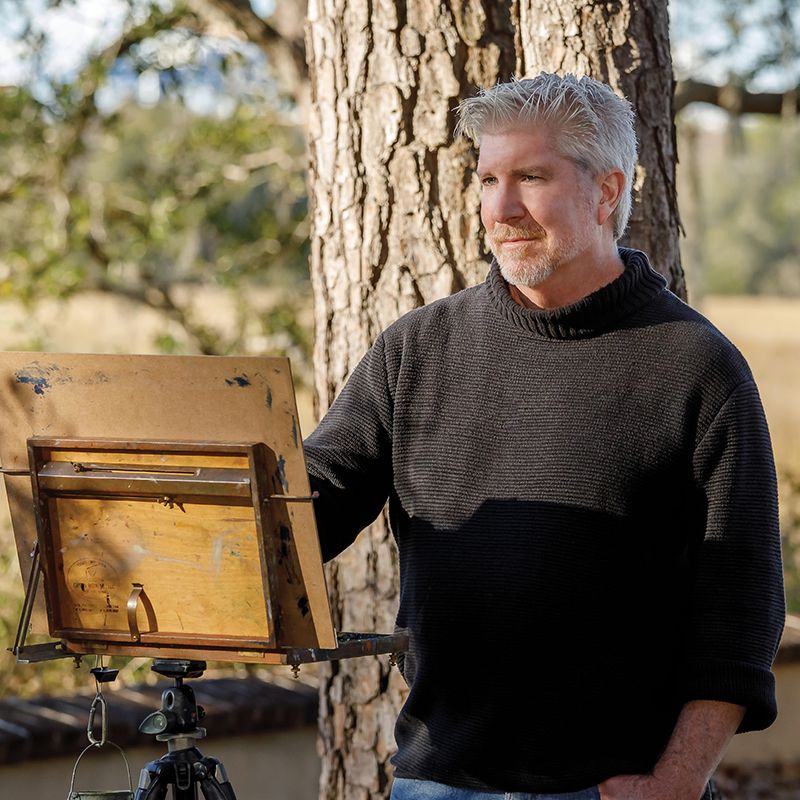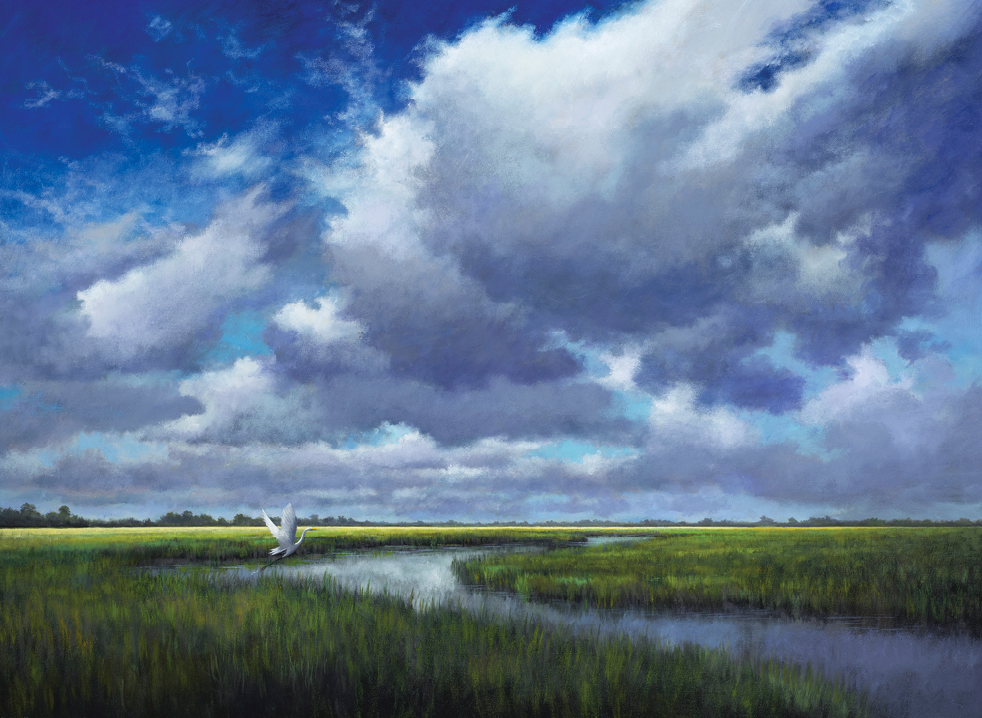The SEWE artist is always looking for silver linings

Mark Horton is influenced by the play of light in the Lowcountry and often paints en plein air
To be a member of The Cloud Appreciation Society, you must agree that clouds are unjustly maligned and that life would be immeasurably poorer without them. The fact that painter Mark Kelvin Horton is a subscribing member of this UK-based organization might give you a sense of how he begins his creative process. It seems as if clouds play the leading role in his artist manifesto.

Horton has said he painted Onward (oil on canvas, 36 x 48 inches, 2020) to illustrate that we ”keep pushing forward in our own way.”
A native of rural North Carolina, Horton graduated from art school in 1983 and headed to New York City. He built his freelance design group there, working with leading film production companies such as Merchant Ivory, Sony Pictures Classics, and Miramax. In 2001, after 18 years of long hours and heavy agency workloads, he decided to dive into painting full time. He moved to Charleston, where the effects of light and weather upon the landscape captivated him. He’s become known for his contemporary realism oil-based paintings that seem to reveal glimpses of the soul of the Lowcountry where sky, marsh, water, and wildlife dissolve into each other with fluid grace.

Southern Sunset (oil on linen, 40 x 30 inches, 2020)
Before this year’s Southeastern Wildlife Exposition (SEWE) was canceled, Horton had been named the featured artist and his piece, Onward (above), which depicts a cloudy sky over a Charleston marsh, had been selected as the featured painting. His work will continue to be used to promote SEWE in the coming year. Here, the artist and co-founder of Horton Hayes Fine Art discusses the influence of the Lowcountry on his color choices and why he’s partial to cloudy skies:
Head in the clouds: I’ve always been obsessed with clouds. As a kid growing up in rural North Carolina, I would go outside and just watch if a storm came in. I am always watching the weather. Often, I get my cloud references from looking up in a parking lot or crossing a bridge. If I see a great cloud formation that captures my attention, I photograph it with my phone or camera and often will start a painting the next day based on what I saw. I then design a marsh that plays well with the shape in the skyscape, so that it leads your eye through it. I usually start with the clouds, no matter where they are.
Part of the process: I try to paint like I see, because if I am looking at you, the focal point is you, but my peripheral vision is out of focus. If I look at a painting and it’s too detailed, it often doesn’t hold my attention. That is why I try to nail the focal point where you want the eye to be, and the rest is almost understated. I don’t paint every blade of grass. I am trying to get my point across with less fuss or detail and not overdo everything.
Color MVP: Holbein’s blue-grey is the most used color in the box. It’s almost like a king’s blue. It cools things down. I paint a lot of skies, and this is such a beautiful color.
A global palette: Colors can be so different depending on where you are. I used to vacation on the coast in Montauk, New York, and the light out there is so crisp and cool. It’s a much cooler blue. Here, in South Carolina, the colors are much warmer, I think because of the humidity. In England, there are more blues and greys, which I like better. When I teach in Italy or off the North Devon coast in England, I have my students paint thumbnail studies of the colors they see in the landscape, so they have them for reference. I save my samples and pull them out sometimes to help me remember.
Moving on: Onward is about hopefulness—a sign of happier days to come. If you look at the painting, you can see there is a particular design with the clouds. They are heavy but not scary. They have movement and a silver lining with light peeking out. The egret taking off gives a sense of one going from dark to light. I painted it to show a storm passing.
See more works by Mark Horton here